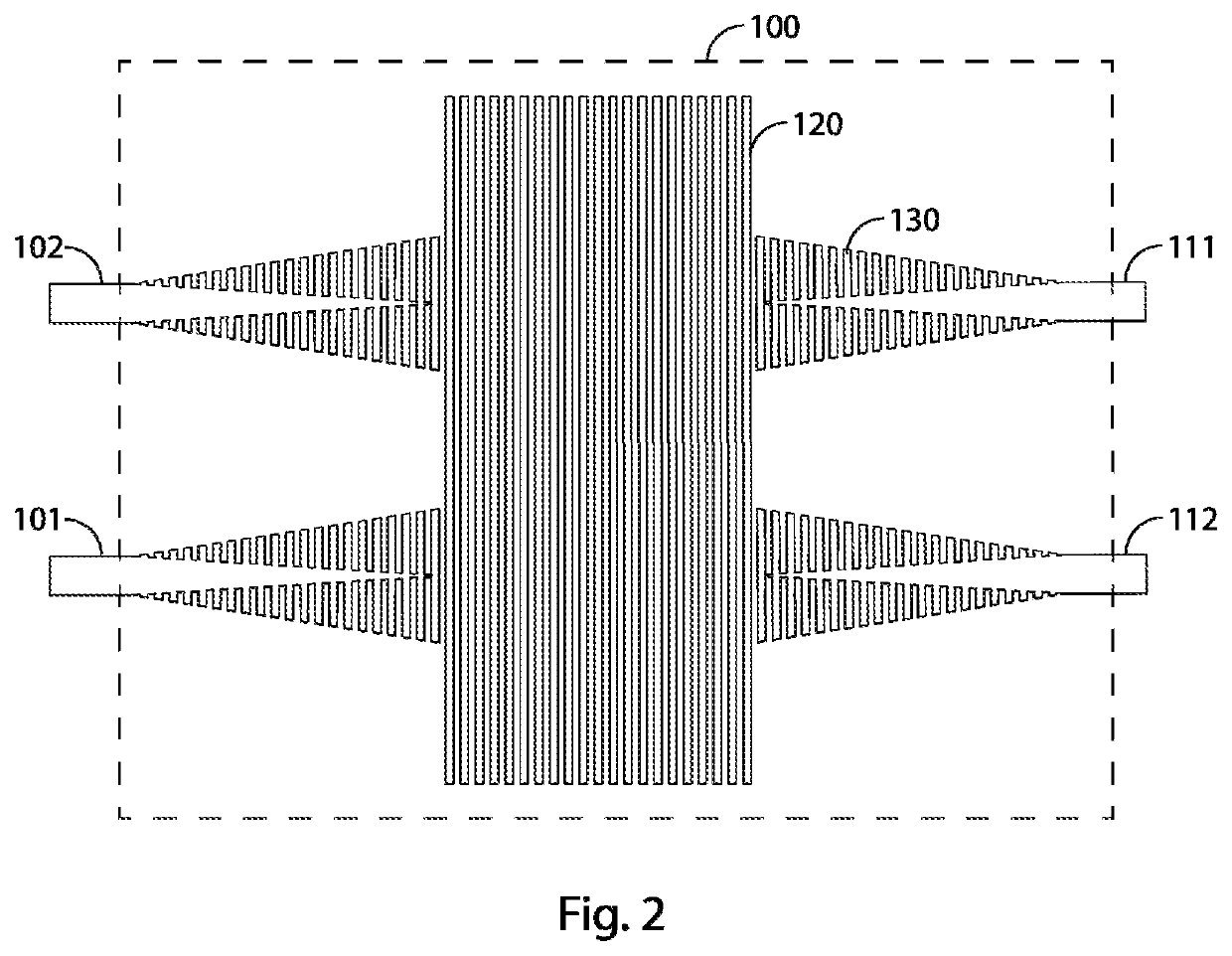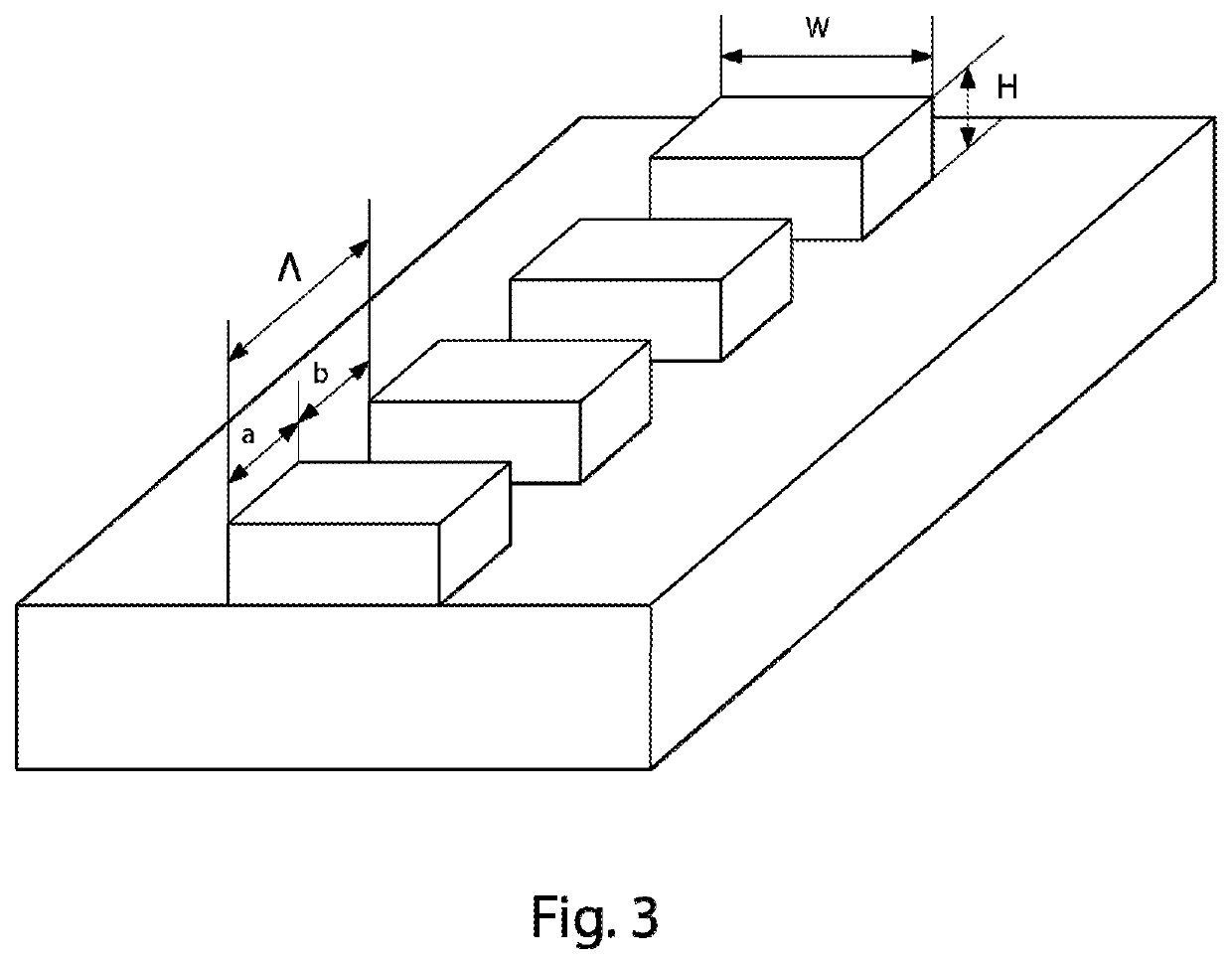Integrated mode converter and multiplexer
a converter and multiplexer technology, applied in the field of photonics, can solve the problems of significant performance degradation long propagation length, etc., and achieve the effects of low loss, high extinction ratio, and wide bandwidth
- Summary
- Abstract
- Description
- Claims
- Application Information
AI Technical Summary
Benefits of technology
Problems solved by technology
Method used
Image
Examples
first embodiment
[0043]FIG. 4 presents the phase-shifter (200), comprising a first waveguide (201) and a second waveguide (202). The second waveguide (202) is a conventional wire waveguide with a first width (w1) without any geometrical modifications, whereas the first waveguide starts with the first width (w1), but comprise two symmetrical trapezoidal regions (210, 211) which widen the waveguide up to a second width (w2) and then decrease back to the first width (w1). As a consequence, mode velocity is reduced and the desired phase shift is induced. Notice that alternative embodiments based on the same principle may be implemented, for example substituting the trapezoidal regions (210, 211) for other width profiles, such as curves; by adding a central region with constant second width (w2) between the trapezoidal regions (210, 211); by using a second width (w2) smaller than the first width (w1), and / or by any other combination of width variations resulting in the same total phase-shift.
[0044]In ord...
third embodiment
[0048]FIG. 6, presents the phase-shifter of the invention, relying on one or more phase-loading segments (250) at the sides of the first waveguide (201). Said first waveguide (201) preferably presents a reduced width (w5) in the region where the phase-loading segments (250) are located to delocalize the optical mode and enhance the effect of said segments. Width reduction is preferably performed progressively through mode adapters. Furthermore, the phase loading segments (250) may comprise additional geometrical features on their extremes to obtain a smoother effective index transition, such as angled, curved or thinned extremes.
[0049]Similar width reductions as in the first waveguide (201) may be also implemented in the second waveguide (202), down to the same reduced width (w5) or to a different width, to optimize bandwidth. Furthermore, said second waveguide (202) may also comprise phase-loading segments (250), as long as they present different geometrical properties. Also, the p...
PUM
 Login to View More
Login to View More Abstract
Description
Claims
Application Information
 Login to View More
Login to View More - R&D
- Intellectual Property
- Life Sciences
- Materials
- Tech Scout
- Unparalleled Data Quality
- Higher Quality Content
- 60% Fewer Hallucinations
Browse by: Latest US Patents, China's latest patents, Technical Efficacy Thesaurus, Application Domain, Technology Topic, Popular Technical Reports.
© 2025 PatSnap. All rights reserved.Legal|Privacy policy|Modern Slavery Act Transparency Statement|Sitemap|About US| Contact US: help@patsnap.com



